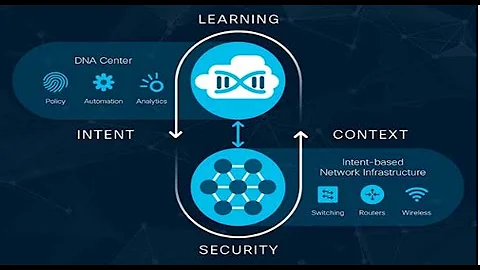The meaning of output of pmap
The text segment is the mapping at 0x400000 - it's marked 'r-x' for readable and executable. The mapping at 0x600000 is read-only, so that's almost certainly the ".rodata" section of the executable file. GCC puts C string literals into a read-only section. The mapping at 0x601000 is 'rw-', so that's probably the famed heap. You could have your executable malloc() 1024 bytes and print out the address to see for sure.
You might get a little bit more information by finding the PID of your process, and doing: cat /proc/$PID/maps - on my Arch laptop, that gives some extra info. It's running a 3.12 kernel, so it also has /proc/$PID/numa_maps, and catting that might give a small insight, too.
Other things to run on the executable file: nm and objdump -x. The former can give you an idea of where various things lie in the memory map, so you can see what's in the 0x4000000 section vs the other sections. objdump -x shows you ELF file headers among lots of other things, so you can see all the sections, complete with section names and whether they're mapped in a run time or not.
As far as finding a written explanation of "what is where", you'll have to do things like google for "ELF FILE memory layout". Be aware that the ELF file format can support more exotic memory layouts than commonly get used. GCC and Gnu ld and glibc all make simplifying assumptions about how an executable file gets laid out and then mapped into memory at run time. Lots of web pages exist that purport to document this, but only apply to older versions of Linux, older versions of GCC or glibc, or only apply to x86 executables. If you don't have it, get the readelf command. If you can write C programs, create your own version of objdump -x or readelf to become familiar with how executable files work, and what's in them.
Related videos on Youtube
user1046037
Updated on September 18, 2022Comments
-
user1046037 over 1 year
Overview:
I have an iOS project in which I am using core data
- I have an
Employeesentity and aDepartmententity. - 1 department can contain many employees
- So the entity
Departmenthas a "to many" relationship with the entityEmployees, the relationship is calledemployeesand the reverse relationship is calledwhichDepartment
Aim-1:
I want to delete all the employees in a specific department
Questions:
a) is the following correct, or would it cause mutation or some problems ?
b) is this is the correct way to do it ?
Pls Note -
removeEmployeesis a method that was auto generated while creating the subclasses of the entities- (void) deleteAllEmployeesForDepartment: (Department*) requestedDepartment { [requestedDepartment removeEmployees:requestedDepartment.employees]; }Aim-2:
- I want to delete the employees based on some condition
- I am deleting objects inside a fast enumeration loop for the fetched records
Questions:
c) Is the following correct, or would it cause some mutation ?
d) Is it like modifying the object in fast enumeration ?
e) Is there a better way to do it ?
Pls Note -
removeEmployeesis a method that was auto generated while creating the subclasses of the entities- (void) deleteAllType1EmployeesWithDepartment: (Department*) requestedDepartment { fetchRequest.predicate = [NSPredicate predicateWithFormat:@"type == %i AND whichDepartment ==%i", 1, requestedDepartment.departmentID]; NSError *error; NSArray *listOfEmployeesToBeDeleted = [self.managedObjectContext executeFetchRequest:fetchRequest error:&error]; for(Employees *currentEmployee in listOfEmployeesToBeDeleted) { [self.managedObjectContext deleteObject:currentEmployee]; } }-
 Danila Ladner over 10 yearstext segments are actually read only, so it is at 0000000000600000 .
Danila Ladner over 10 yearstext segments are actually read only, so it is at 0000000000600000 . -
 Thorsten Staerk over 10 yearsThanks! Shouldn't the text segment be executable as well?
Thorsten Staerk over 10 yearsThanks! Shouldn't the text segment be executable as well?
- I have an
-
user1046037 about 12 yearsthanks Daniel, I just tested the methods deleteAllEmployeesForDepartment and clearEmployeesOfType. Both these methods seem to be causing the
whichDepartment(relationship) field to become NULL. I think the reason for this may be because internally fast enumeration or something similar might be used to loop through the NSSet, and deleting an object from the same set which is used in fast enumeration is causing this to happen. However fetch requests and looping through them and using deleteObject seems to work ok. -
 Thorsten Staerk over 10 yearsGreat answer. Now, where is the program's heap? And what does this [ anon ] mean? What do I have to google to find this out?
Thorsten Staerk over 10 yearsGreat answer. Now, where is the program's heap? And what does this [ anon ] mean? What do I have to google to find this out? -
 Admin over 10 yearsYou know what? I was wrong about the 0x601000 address mapping - that's the heap, probably. You'll have to use
Admin over 10 yearsYou know what? I was wrong about the 0x601000 address mapping - that's the heap, probably. You'll have to usereadelforobjdumpto figure it out, and whatever the executable you've made. My Arch linux box uses /usr/lib/libc-2.18.so, so it's quite different than your box. -
 ninjalj over 10 years
ninjalj over 10 years0x601000is the data segment. It contains.data,.bssand can be extended viabrk().[anon]indicates non-file backed memory (so backed by swap), obtained viammap(). dlmalloc usesbrk()for allocations smaller than ~64Kb IIRC, andmmap()for larger allocations. The heap is everything allocated by malloc, both the extended part of the data segment, and themmap()-based allocations.




